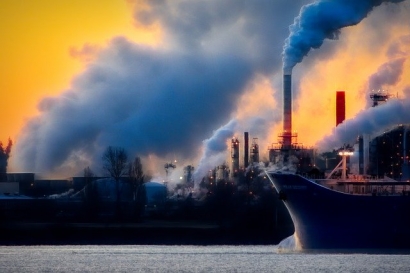
These are three ways in which outdated infrastructure contributes to climate change — along with how we can take steps to improve our infrastructure and avert the coming climate crisis.
Ancient Power Lines Spark CO2-Generating Wildfires
Normally, scientists don't count the carbon dioxide produced by wildfires when determining how much carbon dioxide we produce every year. This is because wildfires are typically part of the normal lifecycle of forests. Over time, dead plant matter, like leaves and branches, builds up on the forest floor. When it is burned away by wildfire, it clears the way for new growth that, in general, pulls in enough CO2 to offset the carbon cost of the original wildfire.
This isn't always the case, however. A big enough wildfire will do more harm than good. Take, for example, the 2018 California wildfires, which produced more than 68 million tons of CO2. That's about as much carbon dioxide as California produces every year to provide electricity statewide.
State investigators determined that the culprit behind the fires was aging electrical equipment managed by PG&E, the company that provides electricity to much of California.
Wildfires may also create a kind of feedback loop with aging electrical equipment. The fires tend to damage electrical infrastructure, which may make the grid more liable to starting additional fires in the future.
Aging electrical equipment can have other consequences, as well. Research shows that, globally, the inefficient transmission of energy eats up more power than some whole industries.
In America, the national electrical grid is in desperate need of an overhaul. Some states have already taken on the task of replacing outdated equipment. In some cases, like in Texas, upgrades have given local communities more opportunity to take advantage of renewable energy sources, especially wind power. This has made the grid both less dangerous and more sustainable overall.
Poor Insulation and Outdated HVAC in Buildings Cost Energy
Inefficient building systems can cost serious energy. Outdated lighting needs more power to keep the same space lit. A lack of insulation means building managers need to use more energy to keep the building climate controlled. Aging or inefficient HVAC systems have a similar impact.
One DOE study, for example, found that the average building owner may be able to save an average of 38 percent on power costs by upgrading the building's HVAC system. For some buildings, the energy savings would be even higher — up to 56 percent.
Fortunately, there are organizations working to improve the sustainability of buildings around the world. For example, there's the LEED certification, which is awarded to buildings that meet certain sustainability standards. Energy Star also created its own certification, which it awards to buildings that are at least 15 percent more energy efficient than traditional buildings.
Other groups are taking a more ambitious and direct approach to cutting down on the building sector's CO2 emissions. Architecture 2030, for example, has consulted with architects and government officials to reduce the environmental impact of buildings. In Arizona, planners have started to build what they claim will be the world's first solar city, powered entirely by the sun during the day.
Upgrading benefits may have other benefits, as well. For example, on a national scale, green upgrades could also generate major business. In Canada, for example, experts believe the green building sector will contribute $150 billion to the country's economy by 2030.
Limited Transportation Options Make Traveling Unsustainable
Greenhouse gas (GHG) emissions from transportation make up 28 percent of the United States' total GHG output, making transportation the largest contributor of greenhouse gas emissions in the country.
Much of this is due to older and less efficient vehicles — a problem that individual action can solve in some cases. A significant portion, however, isn't caused by the vehicles on the road. Instead, it's caused by our transit infrastructure.
One 2019 study found that keeping roads in good shape could cut down on carbon emissions and reduce fuel consumption. Better roads would also reduce tire wear and damage to vehicles, leading to further consumer and energy savings.
Improving our transit infrastructure may also save it from the effects of climate change. A large number of roads and bus terminals, for example, sit in flood zones. Researchers believe that major weather events like flooding and hurricanes may become more frequent and intense as the climate warms. Climate change might lead to the destruction of transportation infrastructure if not managed.
Improved availability of transportation options could also help make transportation infrastructure a little more green. Current estimates suggest that strong public transit initiatives could reduce the nation's carbon output by 37 million metric tons.
How Upgrades to Infrastructure Can Help Avert Climate Change
Outdated infrastructure might be contributing to climate change. With the right fixes, we can update this infrastructure and work towards preventing the already-unfolding climate crisis. Upgrades to roads, buildings and the electric grid can go a long way toward making these systems greener. As an added benefit, preventing climate change also prevents damage that intensified natural disasters could cause.

